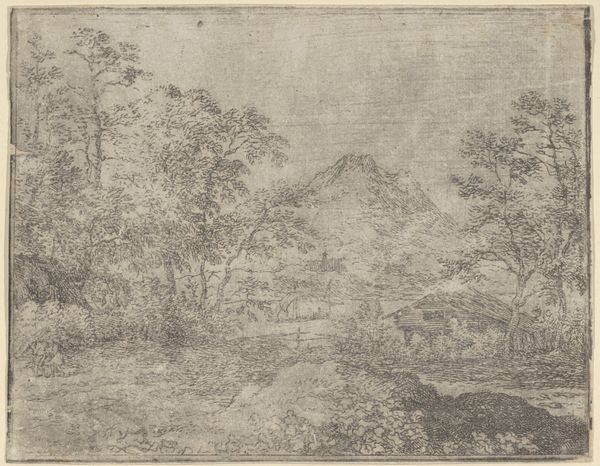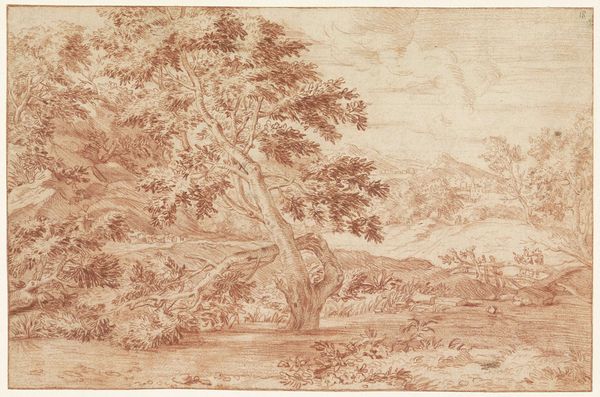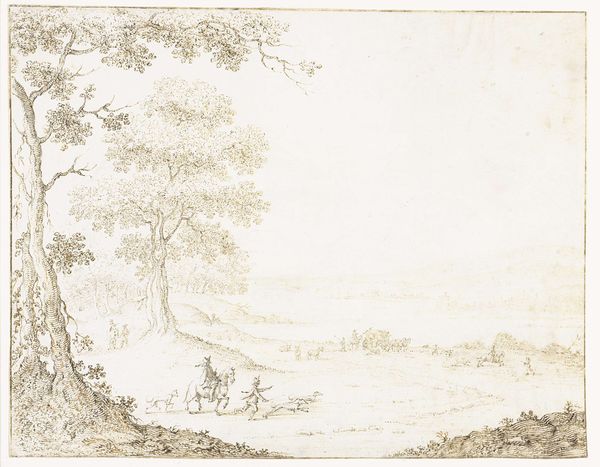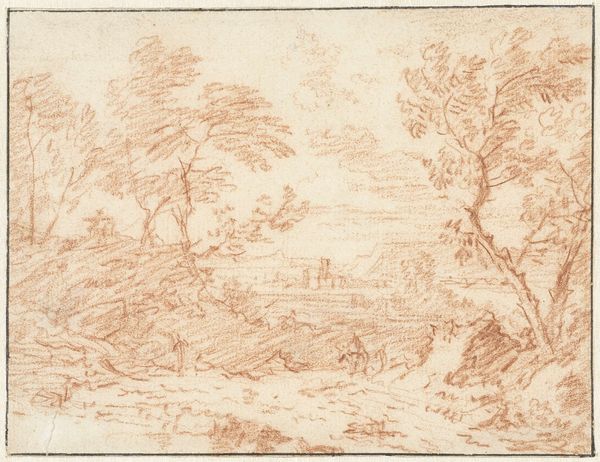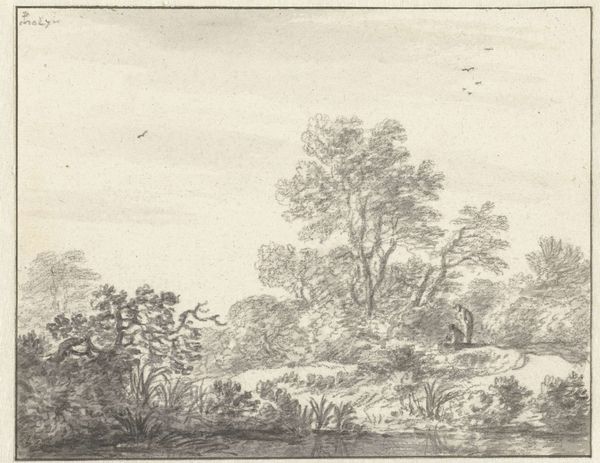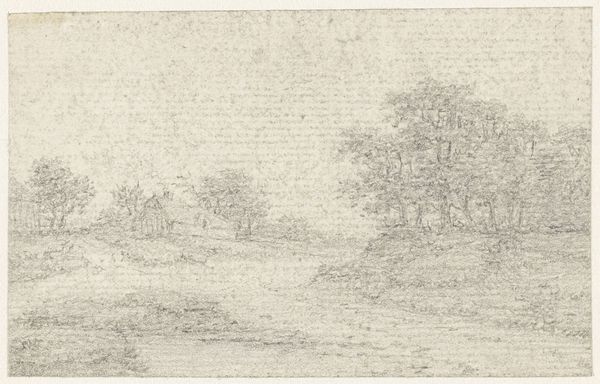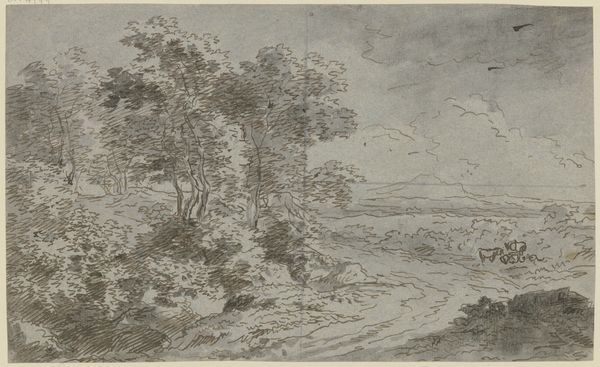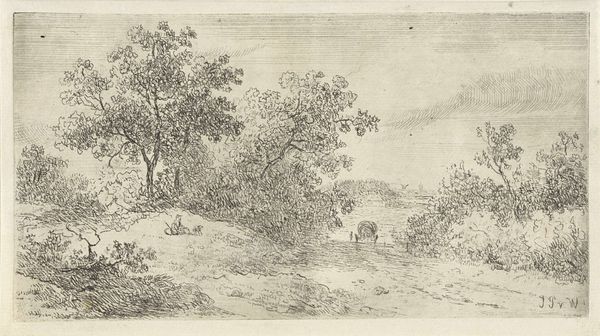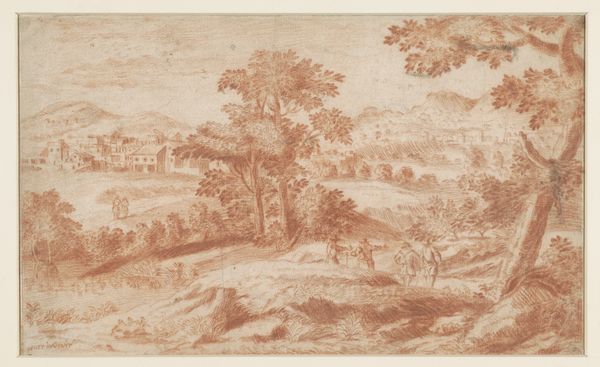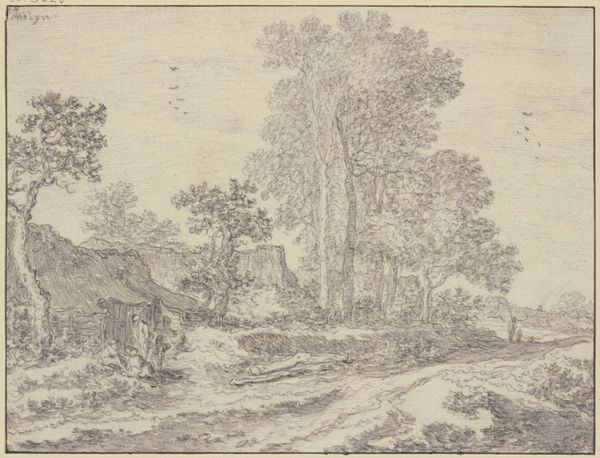
drawing, etching, paper, ink, pencil
#
drawing
#
baroque
#
etching
#
landscape
#
etching
#
paper
#
ink
#
pencil
#
genre-painting
#
realism
Dimensions: height 190 mm, width 302 mm
Copyright: Rijks Museum: Open Domain
Curator: Welcome! Today, we are exploring a piece titled "Berglandschap met een weg langs een meer," or "Mountain Landscape with a Road Along a Lake," attributed to Jan Both, dating back to circa 1628-1652. It's a beautiful example of Baroque landscape art rendered in ink, pencil and etching on paper. Editor: It feels incredibly serene, almost ethereal. The delicate lines and monochromatic palette create a soft, hazy atmosphere. It reminds me of childhood memories of looking through old photographs. Curator: That's interesting. Both, of course, operated within a context where landscape painting served various social and cultural functions. The Rijksmuseum, where this work is housed, plays a crucial role in shaping its reception and our understanding of it. How do you see this piece contributing to or challenging prevailing notions of landscape in the Dutch Golden Age? Editor: Well, perhaps it challenges the overtly nationalistic landscapes we often see, doesn't it? This scene, though technically Dutch in origin, evokes a more universal experience of nature. There is no obvious glorification of Dutch territory. I see echoes of the Italianate style that became popular during that time and challenged the Dutch tradition, signaling wealth, culture, and a changing socio-economic landscape. Curator: Yes, indeed. And beyond the formal elements, how does it resonate with contemporary conversations around landscape, perhaps regarding environmentalism or the human relationship with nature? Editor: The solitary road cutting through the landscape seems poignant in the context of our current environmental crisis. The seemingly untouched quality of the scene is perhaps a romanticised ideal that we struggle to achieve today. In light of globalization, do we risk romanticizing landscape while othering ourselves as conquerors in the Anthropocene? Curator: These are valuable considerations, I believe. By connecting the historical context with contemporary issues, we can begin to ask pressing questions about art's place in navigating those themes. Editor: Agreed. It is through bridging these dialogues, these different readings and understandings of history, that art's transformative potential truly shines. I will certainly look at 17th century landscape art differently now. Curator: I concur, thinking about how these representations impacted early ideas about the natural world and our relationship to it has also left me with new questions.
Comments
No comments
Be the first to comment and join the conversation on the ultimate creative platform.
